Fertilisers Can Be A Gardener’s Secret Weapon – But When Should You Use Them?
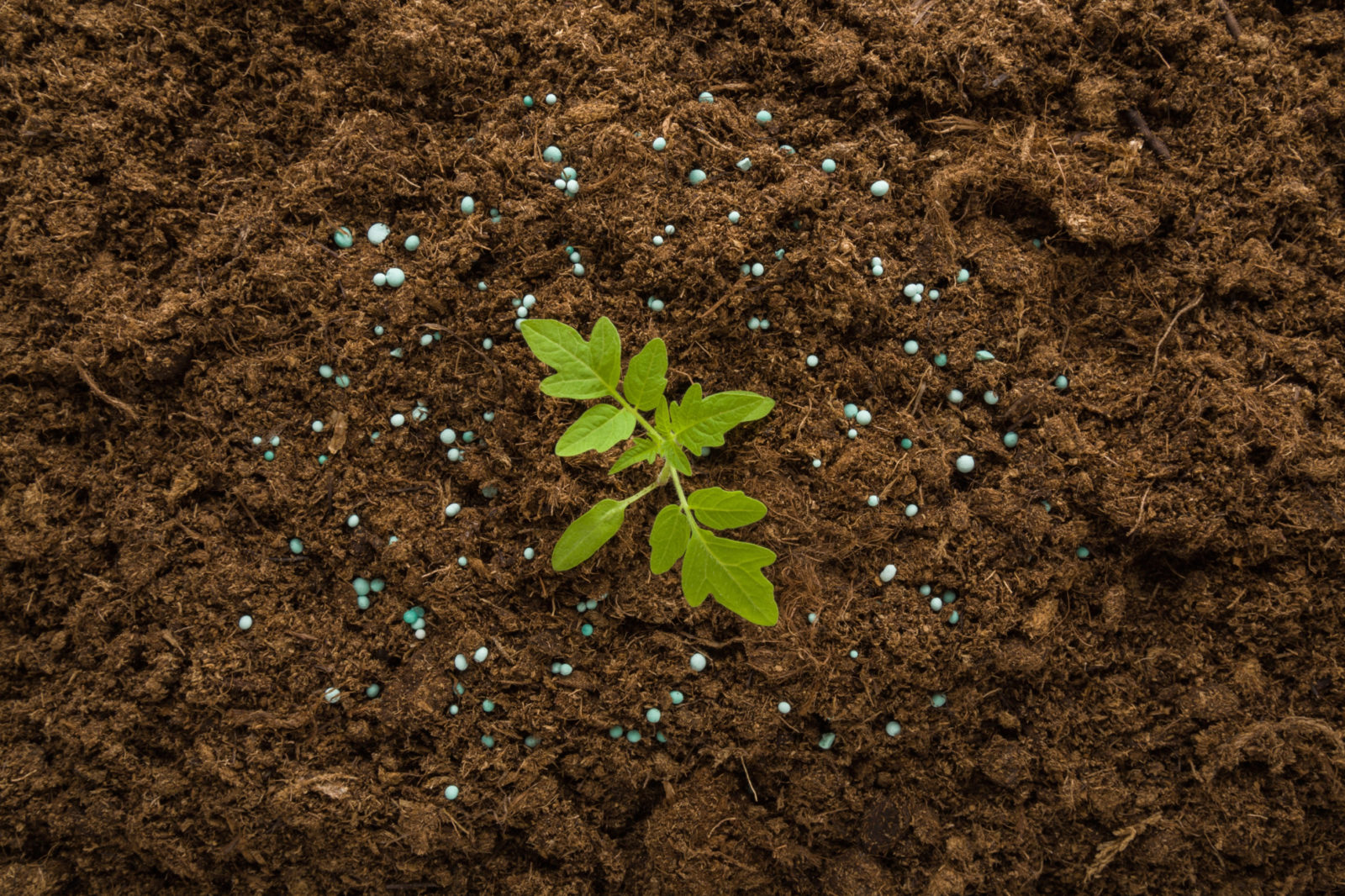
Reviewed By DAN ORI

Dan has over 27 years’ under his belt caring for plants and gardens. Working as a Horticultural Instructor and Consultant, he draws on a diverse range of experience that includes working as a Head Gardener, Tree Surgeon, Garden Centre Trouble Shooter, and writer of academic papers. Dan has a Level 3 Diploma in Horticulture and is currently a candidate for the RHS’s most prestigious award – The Master of Horticulture.
Fertilisers are used frequently in gardening and there are many different types to choose from.
In this guide, we’ll take you through the basics of fertilising so you know how and when to feed plants growing in your garden.
What Is Plant Fertiliser?
Plant fertiliser is an organic or artificial product that contains various elements, particularly nitrogen, phosphorous and potassium (NPK) their salts and compounds, and other micro-nutrients that plants need for growth and vitality.

These components can be beneficial to their overall health and bring about various desirable outcomes, even if they aren’t needed for growth.
Plant fertilisers are available as solids, granules or powder, or liquids.
Why Use Them?
Though some plants do not need fertilising, a clear majority of plants derive benefits from correct fertilising.
These plants include flowering plants, herbs, shrubs, vines, vegetables, fruits and even some trees.
These benefits include resistance to pests and diseases, a more robust root system, stronger growth, healthier foliage, better yields, properly-formed fuller flowers and more profuse blooming.
When To Fertilise Plants
As a general rule, springtime is the fertilising season for most perennials, but depending on the plant and its blooming season, it may be fertilised during other times of the year too.
Ornamentals are often fertilised just before the flowering season is due to start, whilst some require additional feeding during the flowering season as well.
Many types of plants growing in containers or in greenhouses are fertilised periodically.
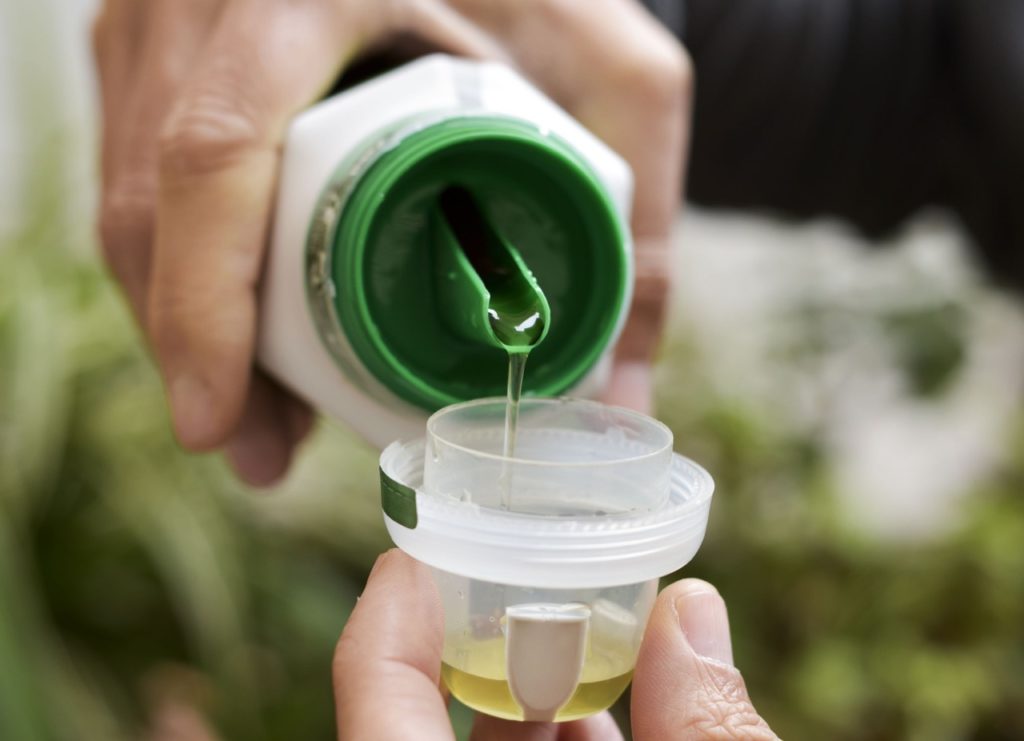
As to the specifics of this question, we suggest that you look up the fertilising regimen for the particular plants at issue.
Savvy gardeners also fertilise plants as and when needed.
If they observe that a plant has some nutritional deficiency or is less than healthy, they may decide to feed it.
Plants that are stunting, wilting and flowering poorly may prompt gardeners to feed the plant with an appropriate fertiliser.
What Are The Different Types Of Fertilisers?
Fertilisers are found in an enormous range of kinds and types and it is hardly possible to enumerate them all.
Plant fertilisers meant for home gardens are divided into chemical or synthetic fertilisers and natural or organic fertilisers.
Quite often a fertiliser product will include content that is chemically or synthetically derived as well as taken from natural or organic sources.
Fertilisers are typically produced in granular or powder form which are most often used for plants in open ground.
They are also available in liquid form which is primarily used for container plants and also for edibles.
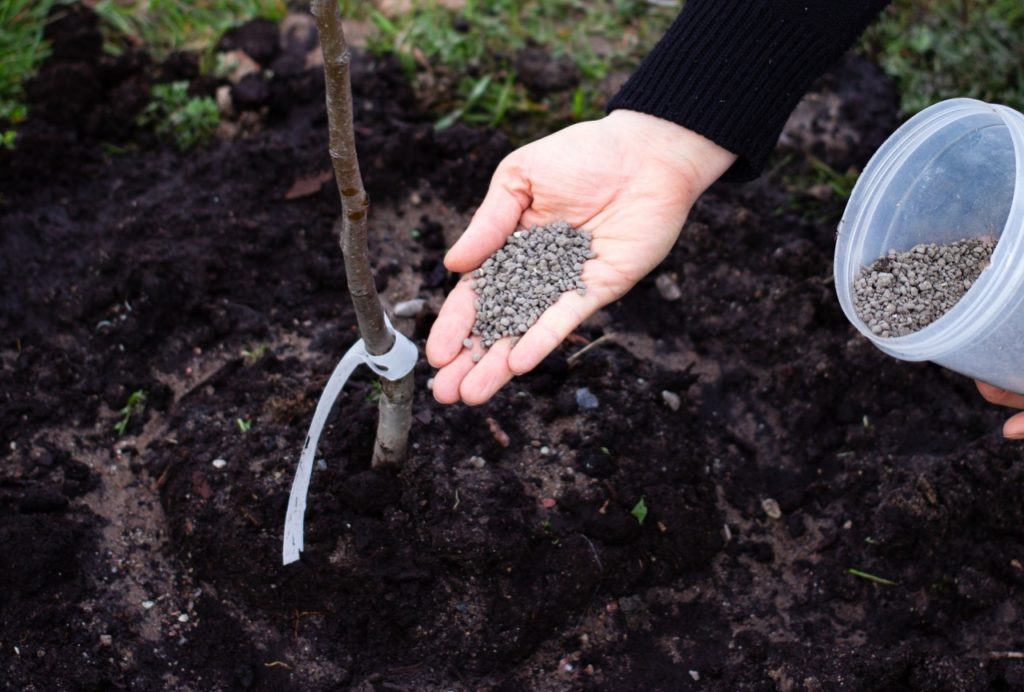
Controlled-release and slow-release fertilisers, which are sometimes incorrectly thought to be synonymous, introduce nutrients into the soil over a longer period of time.
Controlled-release fertilisers are coated granules of inorganic material with a coating formulated to release the nutrients at a controlled speed proportionate to the soil’s dampness and temperature.
Slow-release fertilisers are mostly organic and by virtue of the action of soil microbes, they simply break up slowly and release the nutrients slowly.
Liquid fertilisers are available in the form of inorganic elements and compounds as well organic material.
Some formulations are ready to apply, others need to be diluted.
Fertilising Do’s & Don’ts
When using fertilisers:
- Do not allow undiluted or raw fertiliser of any kind to come into contact with a plant’s roots.
- Do not exceed the maker’s specifications as to volume per surface area or dilution strength.
- Do not exceed the frequency of fertilising that is recommended for a particular type of plant.
- Do not fertilise a very young, injured, or diseased plant in the same way that you would a healthy, mature plant.
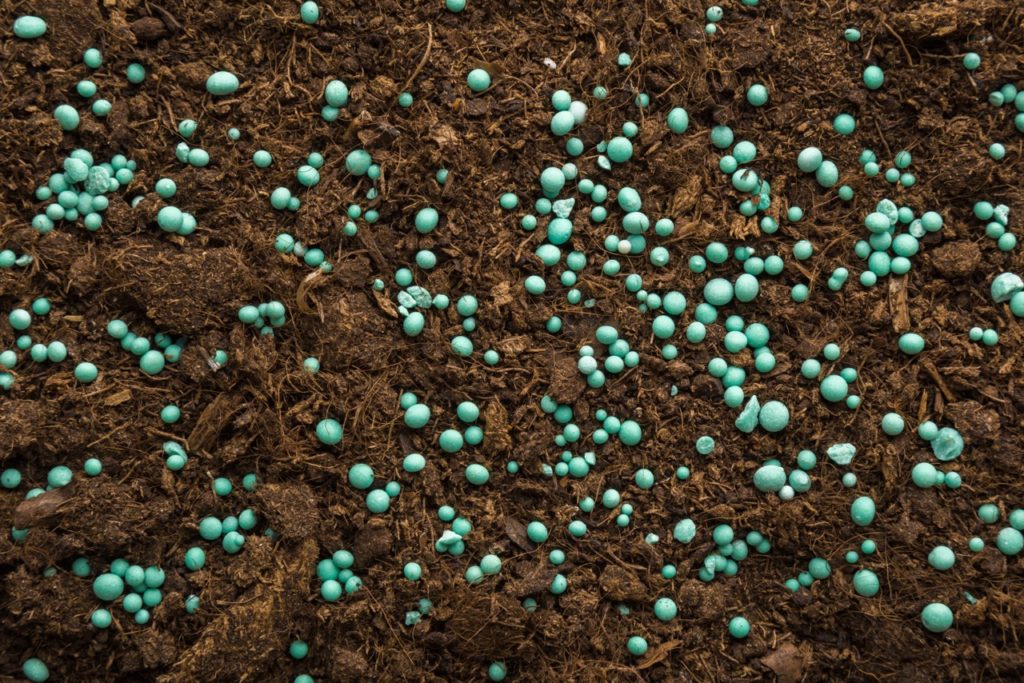
Be sure to steer clear of the don’ts above and to apply fertiliser as recommended on the label.
Fertilisers should be used correctly else your efforts may go for nought and you may even injure your plants.
How To Fertilise Plants
First, try to evaluate your soil pH.
If it is too far out of line from the appropriate range for the plant in question, the roots will not be able to absorb fertiliser nutrients.
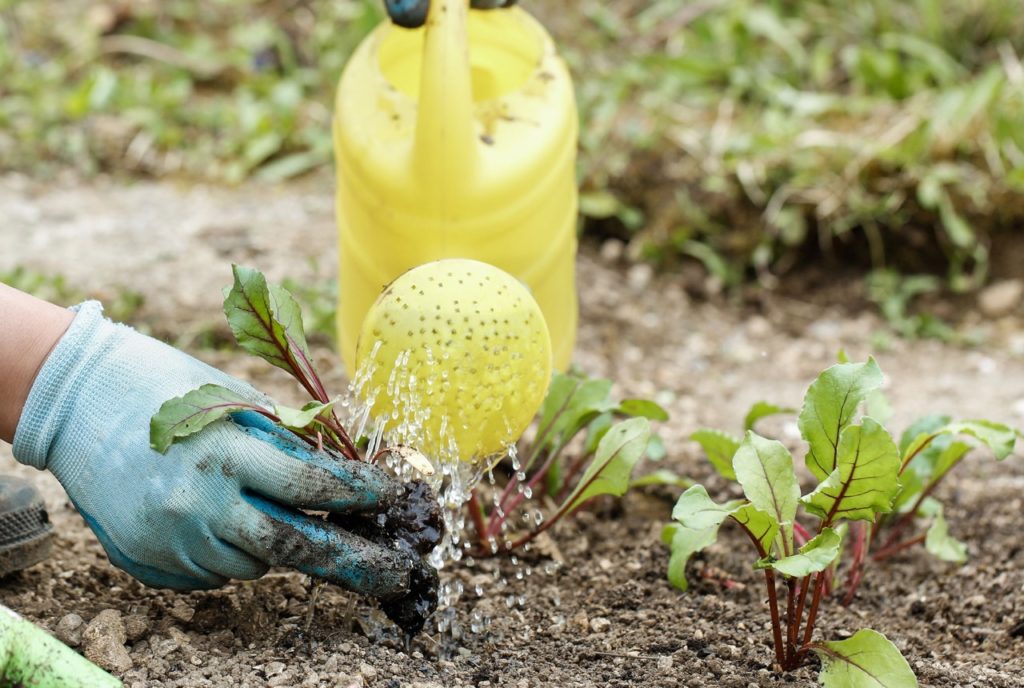
Before fertilising your plant, you should first have a good understanding of:
- The type of fertiliser
- Its dilution requirements or its proportion to the soil
- The quantity that needs to be applied
- Where in the soil it should be applied
- The best seasonal time of application
- The correct frequency of application
Fertilisers are used in three ways: top dressing or sprinkling, soil amendment, and watering over.
Sometimes nitrogen-based liquid or powder-fertiliser solution is also sprayed on the underside of leaves.
In the top dressing method, the recommended quantity of fertiliser is laid, quite often scattered by hand, on the surface of the soil around the plants.
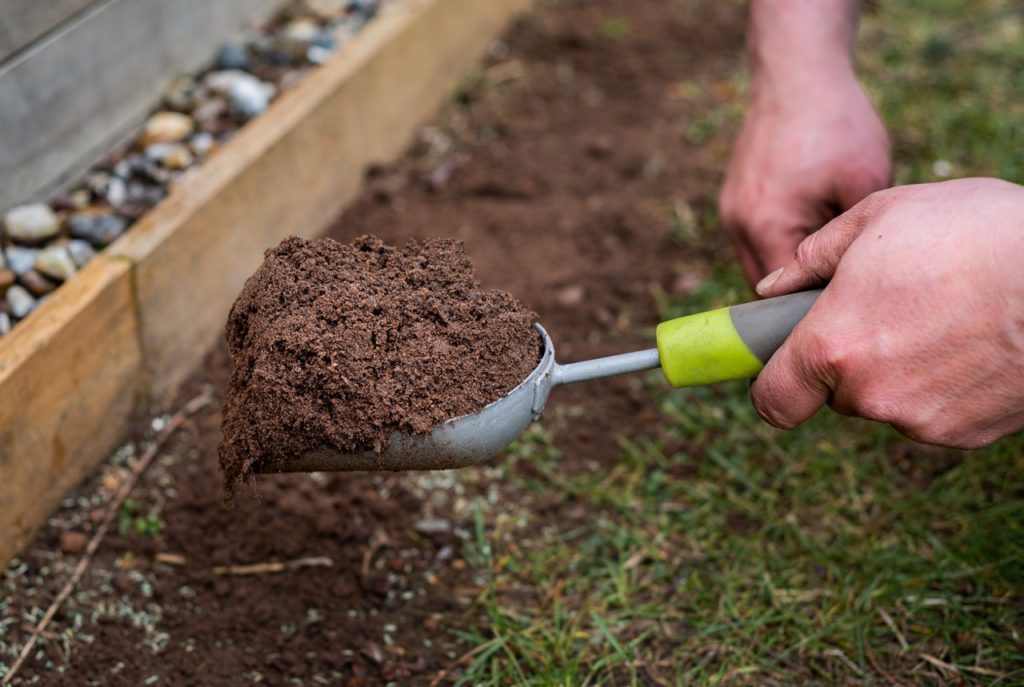
In the soil amendment method, the recommended quantity of fertiliser is mixed into the pile of soil you have set aside, or the ground is cultivated and tilled and fertiliser is mixed into the native soil, amending it.
The watering-over method is where the gardener simply pours an appropriate volume of liquid fertiliser, diluted as necessary, around the main stem.
How To Make Homemade Fertiliser
Understanding how to make homemade compost is a good place to start.
Get chicken or rabbit manure and allow it to rot well in the sun. This can make a great base for compost.
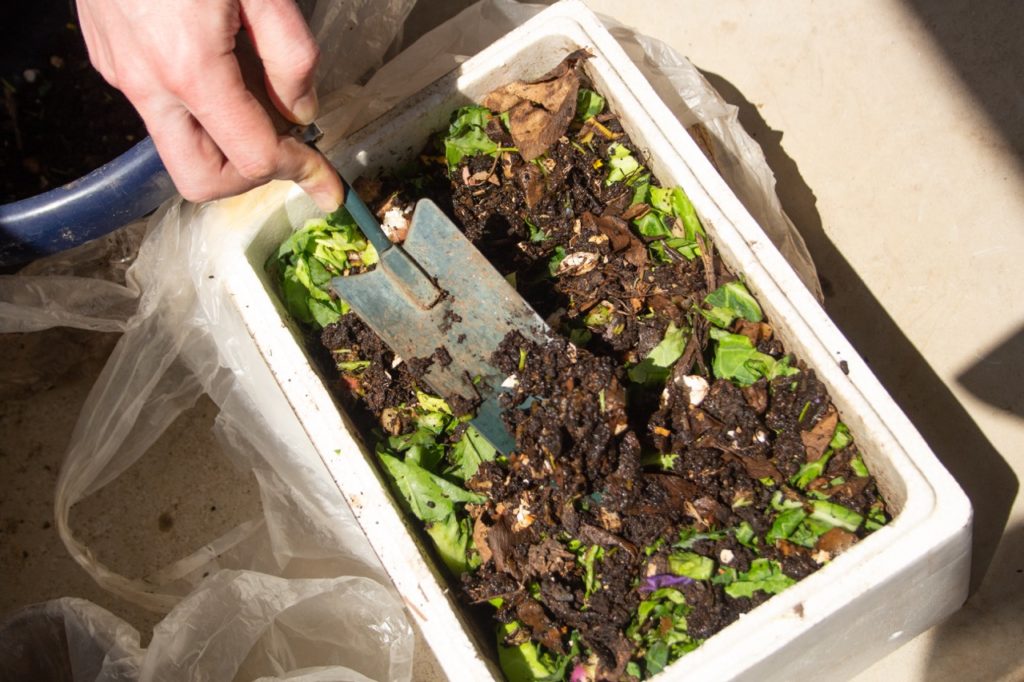
Rotating compost tumblers and comfrey deserve a special mention.
Many rotating compost tumblers make very desirable compost tea as a by-product of the composting process.
Comfrey leaves, especially Russian comfrey leaves, are among the best green materials for making compost and fertiliser for flowering plants as the leaves are especially rich in potassium.
Composting comfrey leaves, among other materials, in a rotating tumbler will result in very high-quality compost tea.
“The simplest way to fertilise plants is to mulch or top-dress the soil with well-composted garden compost or peat-free multipurpose compost,” shares Dan Ori, a Master Horticulturist.
“However, plants we refer to as hungry due to flower and fruit development would often need additional slow or controlled release fertiliser and possibly additional liquid feeds to achieve best results.
“Light applications of well-rotted manures can be beneficial, but don’t use these with root vegetables as it causes roots to distort, this is called forking in roots like carrots.”

